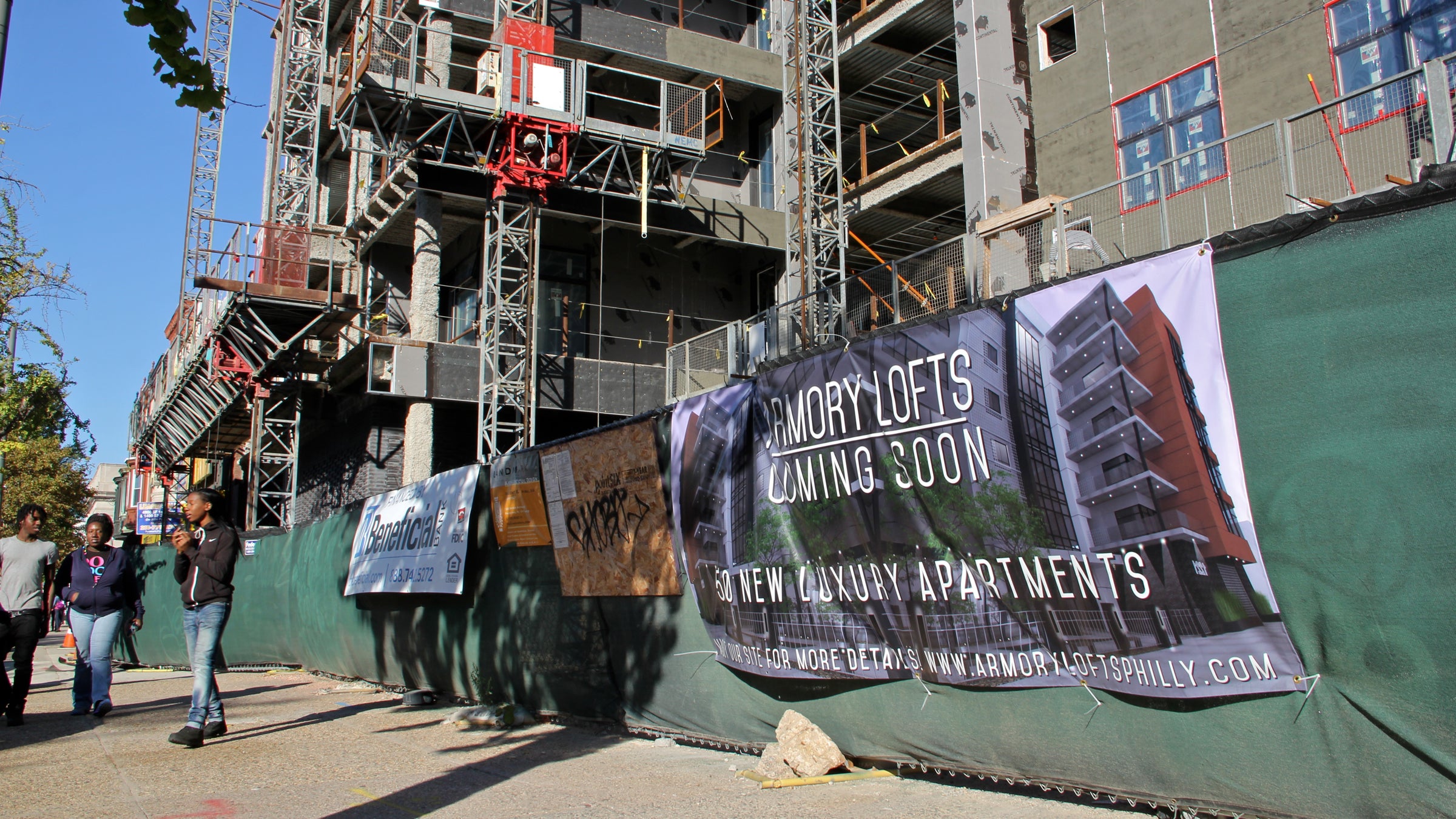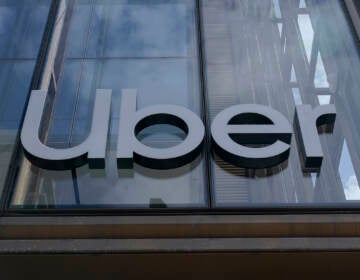Path out of gentrifying Philly neighborhoods just as likely to lead up as down, study finds
Listen
Luxury apartments go up on South Broad Street near Wharton in South Philadelphia, one of the most rapidly gentrifying areas of the city. (Emma Lee/WHYY)
The generic storyline about gentrification goes something like this: Increased economic development raises the cost of living in a neighborhood, forcing out low-income residents and ushering in a new demographic.
But where do the displaced go?
A new report from the Federal Reserve Bank of Philadelphia went beyond just illustrating displacement by also tracking those pushed out of communities that become too pricey.
The telltale signs are everywhere.
Over roughly a decade in Center City and parts of Callowhill and Northern Liberties, average median home values jumped to $315,000 from $154,000. Average monthly rents there grew from $707 to $994. In West Philadelphia near the universities, average monthly rents ballooned from $580 to $969. And around East Passyunk Avenue over the same period, the black population declined by 30 percent while rents went up 16 percent.
What the researchers found is that lower-income people in Philly who are priced out of their neighborhoods are moving to communities with higher rates of violent crime, higher levels of unemployment and less successful public schools.
This means Center City residents are migrating to parts of South Philly. And South Philly residents are being pushed further south or into working-class suburbs in Delaware County. In Lower North Philly, people are migrating farther north.
One of the study’s authors, Eileen Divringi, said when vulnerable residents move “they were at a greater risk of moving to neighborhoods that were more economically distressed with lower qualities of life.”
Divringi noted there are a number of ways to gauge the depth of gentrification in a particular part of the city, but she and her co-authors decided on housing cost increases that were above typical hikes and the quotient of college-educated residents.
As such, it’s not surprising that areas in and around greater Center City witnessed the most change. What is perhaps unexpected is that the vast majority of the residential movement did not look like struggling renters being pushed out, but the opposite. Relatively affluent residents were finding even tonier digs.
The problem, she said, is that is once vulnerable individuals are displaced, they’re usually locked out.
But if they can manage to weather the economic changes, Dirvringi said, gentrification does in fact improve quality of life for those lower on the economic ladder.
“Remaining in a gentrifying neighborhood is associated with a significantly greater improvement in an individual’s credit score than remaining in a low-income neighborhood that did not gentrify,” she said.
Why use credit score as a sign of wealth?
“It’s not a perfect correlation with income, or any kind of obvious indicator like that,” she said. “There is other research that suggests people with low credit scores are disproportionally likely to be lower income and disproportionally likely to be people of color.”
To be sure, remaining in place as a disadvantaged resident is not easy, and she said how exactly one is to stay put amid gentrification was beyond the scope of the study, but one symptom of the problem is a lack of affordable housing.
“The shortage of affordable rental units was particularly acute for individuals of households of four making less than $40,000 a year,” she said. “In particular, for extremely low-income households for households of four making less than $20,000 a year.”
As she writes in the study:
“The decline in affordable housing for low-income households to enter these neighborhoods, coupled with the influx of more advantaged residents, likely play greater roles than the outmigration of low-income households in explaining the demographic changes of gentrifying neighborhoods in Philadelphia.”
WHYY is your source for fact-based, in-depth journalism and information. As a nonprofit organization, we rely on financial support from readers like you. Please give today.




